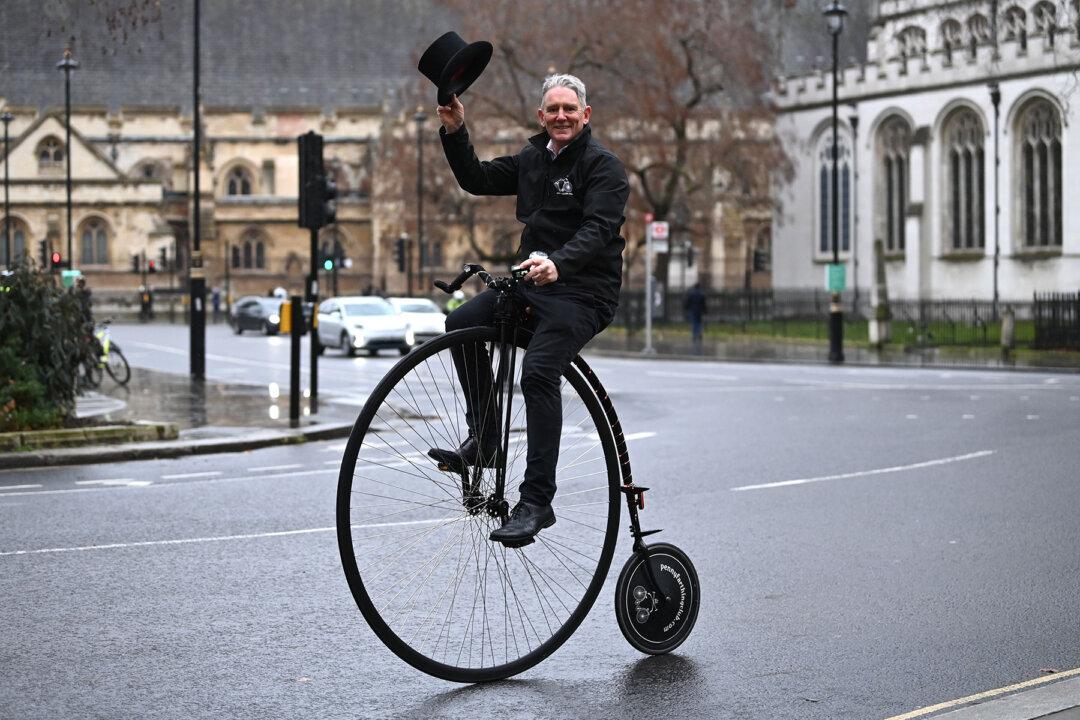Over the past 12 months of lockdowns and restrictions across the UK, people have distracted themselves and kept busy with all manner of interests and hobbies. But one pastime from a bygone era has had a surprising surge in popularity—the Victorian penny-farthing bicycle.
The bicycle—which gets its name from having one large wheel at the front and one small wheel at the back resembling the Victorian penny and farthing coins in their relation to one another—has seen sales in some areas double over the last year.




